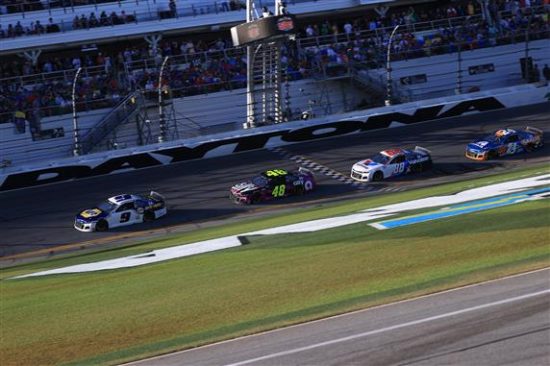
Bristol Motor Speedway management created a marketing gem slogan in branding the high-banked half-mile oval as “The Last Great Colosseum”
Beyond the word play of fashionable marketing schemes when it comes to NASCAR, the true “Colosseum’s” of the sport are the 2.5-mile Daytona International Speedway and the 2.66-mile Talladega Superspeedway.
“The Big One” has become a cliché term in the realm of NASCAR when it comes to events at Daytona and Talladega. A now seemingly generic term for the regularly witnessed multi-car crashes that typically send vehicles flying, flipping and crunching at speeds sometimes more than 200 mph.
Monday’s Daytona 500 ended with a stomach-wrenching horrific crash that had even the most longtime and hardened fans of motorsports aghast.
Coming to the checkered flag, embroiled in the battle for victory, Ryan Newman’s car got turned, darted hard right into the wall and then flipped. While airborne and upside down, Newman’s car was hit in the driver’s compartment by Corey LaJoie, one of numerous drivers in the pack speeding toward the checkered flag.
On Tuesday a 17 minute and 42 second video shot by a fan surfaced online showing the finish of the race and then emergency personnel trying to extricate Newman.
About 40 seconds into the video the camera pans right from the smoking car of Newman sitting upside down to the stopped car of LaJoie. And there was the image of LaJoie, alone on his knees hunched down on the track next to his burning car.
It’s 10 seconds of video that would seem a far better fit for an elaborately produced horror movie than the highlight reel of the finish of what is termed ‘The Great American Race.” One driver trapped in a mangled car, another looking alone, hurt and scared.
Do we need any further proof that the drivers are the Christians and Daytona and Talladega are the lions ready to fight them to the death like it’s the Roman Colosseum? Watch that 10 seconds of video and really think about that.
NASCAR must come to grips with the fact that stock car competition has evolved far beyond even trying to minimally manage safety at Daytona and Talladega. And that’s not just for drivers, but also for fans.
In July 2015 at Daytona, another Cup Series event ended with mayhem coming to the checkered flag. In that ultra-violent and visually horrific completion of a race at Daytona, seven-time Cup Series champion Jimmie Johnson expressed sincere disbelief that driver Austin Dillon was still alive.
Absorb that for a minute.
A chain reaction wreck in that event sent Dillon’s car in flight and into the catch fence. And like what has been seen so many other times when cars have so regularly gotten airborne during events at Daytona and Talladega, Dillon’s car was chopped up like cheese to a grater and spit back out onto the track, with pieces of debris sent flying toward fans. That night a gaping hole was left in the fence. What little was left of the core of Dillon’s car was left smoking and upside down on the track. Dillon walked away from the wreck.
And Johnson said he was shocked that Dillon was alive. Not shocked he was uninjured, shocked that he was not dead.
The first question asked by so many who can understandably absorb that something is very wrong with the death-wish type racing that has become events at Daytona and Talladega is typically, how do you fix it?
To many, the thought of making major changes to the layouts at Daytona and Talladega seems on the surface outlandish. Both are classic venues of the sport’s history. They are the grandest venues that NASCAR plays and such a part of the very fabric that is the legacy of stock car racing.
Though the unfortunate fact is, if no amount of research and development and advancements in engineering can keep the cars from flying then maybe the time has come to stop racing on tracks where cars get airborne with entirely too much regularity.
You can’t keep hurtling 3,000 pound plus racecars into fences or flying over packs of cars travelling at 200 mph without tragedy eventually once again taking place. These gruesome wrecks have become no longer shocking, but rather fairly expected. That’s a sign that something needs to change drastically.
And that’s something Newman himself has said. In 2013 he assailed NASCAR for safety issues involving cars flying at Daytona and Talladega.
“They can build safer race cars, they can build safer walls. But they can’t get their heads out of their asses far enough to keep them on the race track, and that’s pretty disappointing,” Newman said in 2013.
Across the spectrum of competition, evolution changes sports in plenty of different ways. And it’s been seen plenty in NASCAR too, from the organizational structure of teams at the sport’s highest level to the changes in point systems to continued improvements in the safety of racing facilities and vehicles.
Change born of growth and evolution is only natural.
In the realm of NASCAR in 2020 competition at Daytona and Talladega is essentially akin to old-style leather helmets being worn for an NFL game. They don’t work.
You can play with the variables all you want to try to find a happy medium so it feels safe, but eventually you have to address the core of the problem, that you’re playing with the technology of 2020 on a playing field that was built to hold up to the standards and technology of 1960’s racecars.
The sport, the cars, the technology of the game, it has left these tracks behind. Though, NASCAR desperately clings to these antiquated behemoths. Nobody wants to close the Roman Colosseum, for where shall we see the Christians slaughtered by the lions?
Yes, motorsports are inherently dangerous. Yes, we’ve heard that used as a sooth the pain mantra for tragedy in racing for years. But there’s inherently dangerous and then there’s purposely dancing on the edge of disaster lap after lap after lap and somehow calling that manageably safe competition.
In February 2013 at Daytona it was Kyle Larson’s car during an XFinity Series event ending up launched and thrown into the fence.
When the dust settled on that tornado of a wreck, the front end of Larson’s car was shredded. A tire assembly ended up high in the grandstand. The burning motor from Larson’s car ended up just feet from the grandstands. Fourteen fans were injured that day by flying debris.
A gaping hole was left in the fence where Larson’s car hit it, similar to the massive hole left by Dillon’s in July 2015.
The quick reaction of many around the sport was the same for both incidents, which is the now cliché term in NASCAR that: “The fence did its job.” What happens when the fence doesn’t do it’s job? What happens when one of these times, after one car leaves that gaping hole in the fence, another flying car behind it finds that hole and take an unfettered flight into the grandstands?
The reality is, NASCAR is playing an appalling lottery at Daytona and Talladega sending cars in the air with the regularity of a busy airport runway.
You think ratings and attendance are a concern for NASCAR now? Send a full racecar into the grandstands at Daytona and see what controversy is really about. And really, it should go with out saying that no fan should have to go to a racetrack worried about being killed.
Roush Fenway Racing announced this afternoon that Newman is awake and speaking. The extent of his injuries has not been shared publicly. And what is the mantra we hear once again when it comes to driver safety? We hear: “Twenty years ago he would have been killed but these cars and tracks are so much safer now.”
There’s truth to the statement of advancement of safety, but saying that after another person is cut out of their car at one of these tracks is called rationalizing the lottery being played. Right now is about coming to grips with the fact that safely competing at Daytona and Talladega is just no longer feasible. It’s about coming to the realization that to keep these facilities operating the tracks themselves have to be changed entirely.
There’s no longer any shock seeing these flying car crashes taking places at these tracks, and that should be a scary thing for NASCAR. It seems today it’s not a question of what might happen but rather when will the seemingly inevitable tragedy happen of either a driver being killed by one of these ghastly wrecks, or fans being killed.
And just sitting back and waiting for the “when it does happen” day to finally decide that change has long been needed should be unacceptable in the sport.
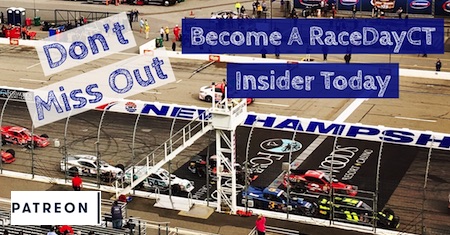


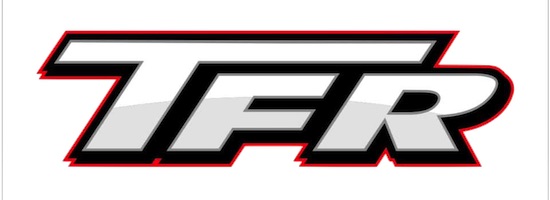


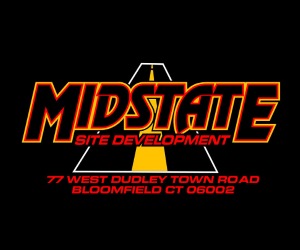












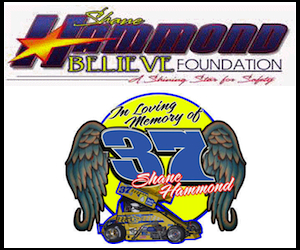

Good read Shawn..
They need to slow these cars down, back to 180 (somehow) and start penalizing the blocking (somehow).. one might be easier to address, but in my view, those are the two culprits at work here.
So happy to hear positive news on Newman today, I feared the worst last night..
Question maybe someone can answer for me, was that not gas pouring out the back of the car, assuming yes, how on earth did that not ignite?
Your entire premise is fatally flawed. Newman’s crash was with the cars separated. So have been serious crashes at Pocono, Charlotte, Atlanta (notably Jimmy Horton in 1995 nearly identical to Newman’s), Bristol, and so on. In 1996 and 1997 Bristol’s fencing was pierced. Last October at Lee NH two cars plowed into the Turn Three spectator area and bent fence posts (I myself got hit in the face by dust from the wreck).
Daytona and Talladega, far from being more dangerous, are LESS dangerous than the other tracks. We know for fact 194 mph is the cut off point for keeping the cars on the ground. And they’re routinely over 203 at about half the tracks.
Stop with the phony what-if scam of an argument. The sport needs this kind of superdraft racing. Stop pretending it’s anything but superior racing.
I’m lost on your comment about Newman’s crash happening when cars were separated? Not registering with me here because the crash happened due to contact and instead of the car hitting the fence and what’s done is done, the car hit the fence and immediately went airborne. Just curious because I’m trying to make sense of your statement of separation.
Great insight Shawn. I was watching the race Monday night. When Newman’s wreck happened I turned to my wife and said ” he’s dead, and if not will probably never race again”. I was so glad to hear he had survived. But even Ryan Preece came very close to getting seriously airborne, he did get airborne for a split second. NASCAR can make the necessary changes to slow the cars down, and after last night I hope they do. Reinstating the ride height rule, and making the teams run stiffer springs and different shocks so the cars don’t suck down to the track will slow them down quite a bit. This along with aero changes will help. But don’t hold your breath. Like you said it’s only a matter of time, with the current configuration, before tradgedy strikes. No one wants to see a driver injured or killed, but even more see fans injured or killed. Just my opinion.
Racing is a dangerous sport. Doesn’t mater what size track or division. Keeping the cars on the ground is the most important part.
Michael Daly, I’m not seeing your assertion that the cars were separated. Newman was leading the low line, got hooked from behind, turning him into the path of the high line. Please explain your position that the cars were separated. I didn’t see it that way.
And please explain this fact that the cutoff speed is 194 MPH. Also, please explain exactly what is a cutoff speed, and how was it determined as fact to be 194 MPH.
Daytona and Talladega aren’t “racing.” They’re NASACAR’s way of marketing to that segment of the fanbase that comes for the crashes. “When will the BIG ONE happen?” = “Watch us destroy hundreds of thousands of dollars worth of racecars!” and “Hey, maybe you can watch someone get maimed or killed!!”
Stopping blocking is not going to work. Or should I say trying to stop blocking is not going to work. It’s an instinct. The chaos, judgement calls and disputed judgement calls will be fought forever. Grudges will lead to more chaos.
Keeping the cars on the ground is indeed important. Once a car gets disturbed and air gets under, it’s all over. Years ago, before roof flaps, if cars got sideways, they went airborne. Pure aerodynamics. Can’t deny science, that’s what happened. The roof flaps help to counter that effect, like the flaps that pop up on wings just after the wheels of a plane hit the ground.
There is a problem though, that the bottom of these cars are effectively aero lift surfaces, once they get air on them. There are several thousand square inches of area. A little pressure causes lots of lift. Everything is done to keep air from getting under the car, from the nose direction, but when air gets under a car from the side or rear, it’s liftoff! Just a little pressure acting on that HUGE floor pan surface makes great lift. It’s called ground effects where aero pressures are much stronger due to the close proximity to the ground and the ability of the air to react against the immovable ground instead of an adjacent fluffy airfield.
It even happens with modifieds that have very little bottom surface, just the belly pans and floor of the driver compartment. There have been a couple that got propped up and went airborne. I’ve seen this happen at Thompson, with speeds well below the 194 MPH presented by Mr. Michael Daly.
Many years ago, the cars were not making contact like they do today. Long ago, it was a HUGE deal if cars made contact and traded paint. Today, it’s expected. Trying to tap another car to get them loose is part of the game. That has to stop. 🛑
Dareal I don’t think saying Newman was hooked from behind is a correct statement. I think Newman threw a couple blocks and got hit from behind square on the bumper but with so much of a difference in speed it ended up being a hammering and while cars were turning on that section of track. Ryan Blaney even said he made two moves on Newman and was blocked twice so he decided to push another Ford to the win but when there bumpers hit it was to hard and sent Newman towards the wall.I pray Ryan Newman returns to normal life activities and racing when fully healed. The blocks that all these drivers use needs to stop.
Put a chicane on the backstretch to eliminate “flat out at all times” pack racing.
Slapnuts, although Newman was blocking every which way he could, it looked like he was in front of the car that hit him long enough. The view from the front of the stretch shows the car behind Newman moved to his left which moved Newman’s rear left that hooked him to the right. I just saw a view from pit road that showed this too.
When Newman’s car got backward/sideways, it went airborne.
Blocking is tough, but it’s hard to say it was his own fault. Cars that are in the position to be blocked have to be alert. They can’t just drive through and take the cars out when they know there’s a good chance it’s not gonna end well.
It’s a tough call, and why blocking can never be ruled out. It will be impossible to enforce. It will be impossible to make these judgement calls in real-time. Unless the rule states severe penalties for contact regardless of conditions. Even then you have to judge who was the hitter and who was the recipient. How would that be penalized? And then there are the whiners that believe all other cars are supposed to get out of the way.
It’s stunning how contact has become normal, and some drivers get away with it, and are pretty much expected to do it. Not saying that happened here, but there’s way too much contact. There shouldn’t be any intentional contact.
If you watch the replay from above it looks like Blanket was loose when he hit Newman, and he hit just a little left of center. Earlier in the race Are house hit Byron in a similar fashion and that too ended in a wreck. One thing they need to do is stop the cars from locking bumpers, because when the guy in back disengages the front car slows significantly, and the cars behind close so fast they can’t help but hit them. The biggest thing is slowing the cars down. Dareal made a good point about the underside of the car, don’t know how they could fix that though, unless they put ribs to break up the large surface flows. In all with a new car coming next year, now would be the time to try different things so they could be integrated into the new designs. They need to do something, before someone dies. And yes, racing at any track is dangerous and there have been horrible wrecks at other tracks, but only on the super speedways do you see car consistently getting airborne. Just my opinion.
Looks like my comment about Lagano yesterday didn’t make the cut. Home state boy can’t be called out?
A number of these young drivers grew up racing cars with nerf bars, great seats and cars that are safer than they have ever been. Older drivers know the dangers of driving into everything, they got hurt!
Most of these kids have no respect and will put others in danger. If they had learned to race in Karts without nerf bars, they would know the dangers of racing. Lagano needs a reboot. He hit and wrecked everything but the pace car during this years Speedweeks.
Ryan Preece on the other hand has a head on his shoulders, respect for others and is one hell of a driver. I don’t think you’d see him hit and bash others at 200 mph.
Great article. This isn’t racing. This is bumper cars at an amusement park. This is a demolition derby at your local fairgrounds. This is akin to cockfighting or dogfighting. This is Nascar playing with people’s lives for profit. Instead of making the cars more stable and faster they pad the walls like an insane asylum. Bump drafting is suicidal and only in Nascar. If Nascar ran track and field events, runners would be punching, elbowing, and tripping each other in the 100 yard dash. Go to your local auto salvage yard with a case of beer and watch them shred cars and maybe you’ll see a few rats jump out. Loosen up the rules on car prep. Let the builders get creative like the old days. Who cares if all the cars are on the same lap at the finish. Go 250 mph. Street exotics are faster. Put engineering first not this live video game crap with a “professional wrestling theme”. I will only watch Nascar on the road racing circuits.
John P.,
Your comment from Tuesday was not approved, but that had nothing to do with Joey LOGANO being from Connecticut. It wasn’t approved because it was childish and twisted.
Thoughts and prayers go to Ryan Newman and his family. I think that was the worst crash I’ve ever seen, basically a direct hit to the most exposed portion of the driver’s compartment. A suggestion to NASCAR: Any oval tracks over 1.5 miles use a 300″ engine. 20% less engine should equal slower speeds and maybe eliminate the need for restrictor plates. You’re still going to have good racing, maybe even better without the plates. The track size would mean those engines would be used on more than two tracks (6 I think?), hopefully making the added expense a little easier to deal with. Back in the day when the speeds were getting crazy they outlawed big blocks. Technology has caught up with that change. Smaller engines will make less horsepower, at least for a while.
Shaun great article. Tom I like the comment pad the walls like an insane asylum. Probably one of the best lines I have read in these forums.
As a casual Cup fan I make a point to try to watch the Daytona, Talladega and road courses. While the racing is downright scary at times on the super speedways, the carnage produces some interesting results. I feel it is the only races in which a lesser funded team has a chance to steal a victory. Superspeedway racing is what it is. It is probably the most well attended and draws the best ratings on TV when not run on Monday. The Daytona 500 is the only race you see with coverage by the national media. People who don’t watch racing came up to me to talk about the accident yesterday as they saw it on the news.
I will admit I did not like the way I felt at the end of the Daytona 500. Endlessly refreshing twitter hoping for good news on Ryan Newman. What I found was endless speculation and people bringing politics into the discussion. Just some of the worst of what the internet does. I don’t know how you make the cars much safer. There hasn’t been a fatality since Dale Earnhardt. They have made the sport safer. I think the safety achievements over the years have convinced the drivers they are invincible in that car to the point they are playing bumper cars at 200 mph. There is definitely a lack of respect of equipment and driver safety out there right now. This sport is more reactive than proactive when it comes to change. Hopefully this incident is a wake up call and driver behavior changes where a win at all cost mentality doesn’t put a fellow drivers life in peril. Hopefully Ryan Newman makes a full recovery. That was an ugly accident.
I don’t blame blaney for the accident I don’t believe he meant to turn Newman. Newman was clearly blocking trying to secure the win. I would have liked to see Corey slow down once the wreck started not to race full throttle into a wreck trying to secure as good a finish as he could. It happens so quickly he probably wouldn’t have been able to slow down much but it didn’t look like he lifted at all. Maybe Nascar should go back to freezing the field as soon as the caution comes out. This racing back to the line while exciting for the fans is problematic. You cant have guys racing full speed into stationary cars.
Thank you for this article, Shawn. You’ve hit on a lot of points/concerns that I’ve shared about Daytona and Talladega for years. These are tracks that NASCAR has simply outgrown. They’ve tried restrictor plates, roof flaps, tapered intakes, etc. and we still have bumper to bumper pack racing and cars getting airborne if they get turned. I recall Jimmie Johnson some years ago (after someone got airborne at Talladega) saying that the only real solution is to bulldoze the banking and go with something less steep so that the drivers are forced to lift going into the corners.
Sadly, I don’t see NASCAR making the kind of changes that are needed any time soon – they are too focused on money and TV ratings (example : the made-for-TV “Chase” or playoffs or whatever they are calling it this year). Thankfully, Ryan Newman survived this accident. But it needs serve as a major wake-up call.
I’d say that was about as good a case that could be made for change. Facts laced with emotion and imagery.
I guess that makes me one of the ghouls. Don’t change a thing other then research on the car damage and changes to the car structure to address the weaknesses that showed up. More improvement like the ongoing improvements that likely saved Newman’s life.
Sighting the causes of how it happened is irrelevant. We’ve seen the ending of these races, the moves they make are insane and that won’t change.
You want intelligence, great strategy and complete safely watch the chess masters go toe to toe. . The origin of stock car racing and it’s attraction has always included the element of risk. Newman is a millionaire or close to it and fortunately or not being a swash buckler slicing and dicing and taking risk was part of how he earned the money.
Football same thing where risk is a part of the attraction. And with far more damage to human beings then racing for sure.
The stands were full on Sunday for the race. Now they will go on to far more modern and safe tracks with huge sweeping turns with plenty of room and slower speeds. The stands will have large swaths of empty seats for those races and the viewership anemic.
It’s ghoulish but this is like the Allison/Yarborough fight in 1979 that changed it all for Nascar. Gladiators doing battle on live TV for the first time. This incident has gotten massive coverage. Yes ghoulish but exactly what NACAR needed and no one died..
I think my opinion has merit but Mr. Courchesne’s case was so good I feel bad for taking the opposite side.
Excellent comments.
But let’s look at the recent New Smyrna Speedweeks modified series racing. It was great. No stupididiotmoron thuggery driving. There was indeed ample opportunity, but it did not happen. And there were drivers that have conclusive and irrefutable reputations at being idiots, or just being wreck magnets. It didn’t happen, they were well behaved and the racing product was fantastic.
The comments here are very thoughtful. Cars have gotten safer and safer, which perhaps leads to the emboldened behavior to use the car as a weapon to take out competitors. It happens all the time. The drivers even talk about how other drivers are “owed” one. A couple years ago when Kyle Busch hunted down and took out Kyle Larson was a perfect example. The announcers knew it was going to happen, they talked about it while KyBusch gained, and then KyBusch rammed and destroyed Larson. Yet no consequences to KyBusch, he went on. It was a clear and blatant attack, everyone knew it was coming and anticipated it. The premise that racing is equivalent to padded wall cage matches is perfect. It is enabling carnage. It’s as if the safety measures are necessary to prevent these morons from injuring themselves and each other as they carry out their petulant behavior. It’s no longer just racing, but full contact carnage.
The car behind has to be careful to not ram or turn the car ahead. Contact used to be unheard of, now it’s normal.
Shawn,
My point is and was, the man is dangerous and the way I put it was to show how ridiculous his actions are, and if they continue, he will hurt someone.
Well, perhaps this is too obvious… instead of focusing on technology and hardware to make things safer, perhaps clamp down on the drivers and force them to behave safer and like professionals. Most of them are idiots, openly talking, if not bragging about taking out a competitor. It’s stunning how clearly intentional contact happens with no penalties. The inmates are running the joint.
John P,
I understand your sentiment, and get what you were trying to say. The way you expressed it wasn’t acceptable to me. And that said, I don’t think this is a time to point fingers at anyone in particular. They all block at one time or another at Daytona and Talladega events because it’s what the racing has become. They’re all guilty of blocking, and I’m pretty sure all will admit it. They typically do in interviews. So you think Joey Logano blocks more. And maybe that’s because they’ve been pretty successful running near the front at these events lately so more often he’s been put in that position to block. But again, they’re all doing it. If you’re saying blocking is the mortal sin, then you shouldn’t be angry at just one person because he’s been guilty of doing it more. If Person A robs two banks and Person B robs 10 banks aren’t they both pretty bad criminals?
The attitude that NASCAR took a few years ago, that is to let the drivers race it out and sort it out on the track is not working. “Have at it” is not working. There is no respect or consideration for safety at all. Making the cars safer so they can take stupid to higher levels isn’t working. The inmates can’t run the joint.
Sponsors however, appear to be eager to pay what ever it takes to destroy cars.
Many good thoughts here, some a little crazy ?
With the devastating Newman/Lajoie wreck on top of the list, think about this for a moment.
How many cars were involved in some kind of wreck during the Clash ? Perhaps all of them ?
40 cars started the 500 and I would guess that 2/3s or more were involved in some kind of wreck ?
I don’t see this as, this driver does this and that driver did that, this is like what Shawn stated in his writing, this is a car vs facility issue that NASCAR and the speedways need to address aggressively. You absolutely cannot have 3700 # cars flying through the air at near 200mph.
The sport,NASCAR and DIS narrowly missed having another tragic loss because of blocking and/or bump drafting.
I dont know of a solution…who really does ?
It might be OK to sacrifice a couple dozen 120K racecars, but it’s definitely not OK to tell all these talented men and women that it’s all OK because “The show must go on” no matter the personal sacrifice. Yes the argument of “Racing is dangerous” can be made, but how many events in all of auto racing wreck more that 3/4s of the field in an event. OH and also going 200mph ! !
get rid of the spotters and radios – they didnt have them years ago. Be a lot tougher to block.
Just another race fan putting their 2 cents in. In my opinion which doesn’t mean much I think they should try to enforce the blocking. The bunched up freight trains don’t help either. The old way of racing in my opinion was more exciting. Let the crew chiefs figure the cars performance and the drivers drive the cars. No matter what they decide to do safety is more important. Does anyone have an opinion on the Indy type cars going over 200 miles per hour or how they try not to. Glad Ryan is awake and talking. It will be awhile before they figure this mess out.
Very touchie subject. It’s Wednesday a little after 2 pm just saw the photo of Ryan Newman walking out of the hospital. Kinda thought well maybe the wreck wasn’t as bad as it looked. Then reality set in. Ryan is very lucky to be walking out of the hospital. Corey LaJoie is very fortunate to not have been taken to the hospital. NASCAR is very fortunate that no drivers or fans were killed. These are no longer race cars, but rather 3600 pound 200 mph+ missiles. For years we have watched the super speedway races, witnessing cars getting airborne. It happens way too often to ignore. You don’t see cars getting airborne with such frequency in any other form of Motorsports. NASCAR must fix this.
“We know for fact 194 mph is the cut off point for keeping the cars on the ground.”
As a pilot and student of aerodynamics, I’d like to see a citation to a scientific paper on the details of how this magic number was determined.
Thanks in advance, I’ll be watching for the cite.
194 really? Someone just pulled that number out of their butt. Anyone with any kind of memory can remember when the cars topped out at like 187 or so, and yet the speedway looked like an airport. I’d say somewhere below 180 would be the magic number if I had to guess. Maybe someone who actually knows can answer that question but I’m sure the answer ain’t 194.
I want what Mr 194 is smoking
I like Fast Ed’s comment about a smaller engine.. and just like they make the call on the yellow line (I know not apples to apples), they could penalize blocking if they wanted to. Point is there can be some calls made that are more subjective (e.g., pass interference in the nfl) – then again, and I’m just arm-chairing this, but smaller engines, less rpm’s, then maybe you don’t need the restrictor plate and thus you don’t have the freight train racing? .. and the bump draft and the blocking..
and so on..
NASCAR changes rules when it serves them best, at their discretion. I wish they put common sense safety above their nauseating marketing, attendance and viewership metrics.. I know, crazy talk, back to my arm chair…
Footnote – Great pic of Ryan leaving the hospital today, holding each of his kids hands.
Rob p., it has to do with many things like weight, surface area, surface contour, shape, etc.
When heading forward, these cars do a good job getting the air up and over the car and that keeps the car grounded. But in the backwards direction, the rear of the car makes like a great air scoop, cramming air under the car that acts like a wedge and lifts the car, very easily at that. It’s like when the pilot puts the nose up on take off. Once the car lifts, it’s take off time.
The #6 went airborne when it was facing backwards and air could get under the car. That resulted in lift, pitched up the car and away it went.
NASCAR will never fix restrictor plate racing, They need the carnage to play on TV to keep the viewers watching. I am glad to see Ryan is doing good. But things like this will happen again, It is racing and it will always be dangerous.
I think the guy that died at Riverside Park was Dave Faroni. As for the car going into the pits or the announcers that would have been Ben Dodge or Rollie Jacobs passing on bogus information that is not my recollection at all.
Nascar Cup deaths by decade 1950/s / 7, 1960’s/ 7, 1970’s/ 4, 1980’s/ 5, 1990’s /3, 2000’s, 2010’s /0.
Last death was Earnhart Feb, 2001.
Determining if changes are needed, what they would be or how to do them is above my pay grade. However the record seems fairly clear that the measures they have taken are working.
Doug, I was sitting with Dave’s sister. She left the track believing her brother was still alive, only to find out he had been pronounced dead before they even extracted him from the car. All the while Ben and Rollie were saying he was talking with the EMT’s. It was his sister who later told us that he most likely passed on impact. Not something you forget. Don’t remember the year or date, but will never forget the anger in her voice having been mislead by the announcers. After a long delay the races did continue. I think it was done at the direction of the higher ups so as not to freak people out. Not blaming people, just pointing that out. We found out Dave had passed the following day.
Really, didn’t see that on TV. NOT. I’m well aware as to why and how these missiles get launched Dareal, it’s called aerodynamics. There are solutions to the problem, but as others have said, that wouldn’t make for good TV. Sad very sad when they put ratings ahead of safety. Still wondering where the 194 comes from, as I recall seeing cars do the same thing in the mid 180’s. There has to be a way to interrupt the air when cars get crossed up to keep this from happening. Just my opinion.
I wondered the same thing. All I can guess is that all the ignition sources were up off the ground.
Maybe other folks can weigh in on the Riverside Park tragedy that in my view is shameful for having so little information available on line about it. We make a big deal of driver deaths and injuries to the most famous drivers and rightfully so and this poor guy that was not in that category gets forgotten along with Riverside Park.
My recollection is that he got turned, went into the fence at a near 90 degree angle the bottom one or two rails gave way and the top rail remained in tact and that was the ultimate cause of death. I also know I’m old, ,feel strongly about the recollection but what geezer doesn’t feel strongly about recollections. Maybe some one can give their perspective if they were there.
The part that troubles me here is a fear that the understandably cynical way we view reporting because of all the bogus claims coming from the White House, political campaigns, cable TV and talk radio somehow get projected in to vague claims of false reporting in this thread.
I’ve been at three events where people were killed or hurt, a number viewed on TV and I have never come away with the impression that the announcers were ever trying to pass on sunny conclusions about things they could not possibly know. On the contrary. They understand a lightning bolt hit where entertainment becomes life or death and are completely aware of their responsibility in the situation. Perhaps speak of the great work from track workers, EMT’s and the medical professional waiting to give the victim the best shot at surviving but never false reporting.
An aerodynamic idea from an uneducated source, me. Two tubes in the trunk that have one end at the back of the car and the other at the front of the trunk lid. Car goes backwards, rear flaps open inward for airflow through the tube and out of the trunk at the base of the rear windshield. Maybe air moving upward and air-damming against the windshield would give the back end some additional downforce when going backwards and possibly prevent a flip. It would maybe make the rear windshield more like a spoiler. Trunk flaps would hinge on the front edge, so forward airflow would keep them normally closed. It would get more air pressure above the rear of the car to offset the air trying to go underneath. it.
Like I said Doug, I don’t fault anyone in that situation. It was tragic, and Ben and Rollie were most likely reporting what they received for info. Yes, the car did break through the bottom section of the rail, while the top stayed intact, which ultimately was the cause of his death. Very tragic. What do you say? Oh by the way driver x has died. That info should not come from the announcers, but from higher up, which I do believe was the case with Riverside. Don’t forget this was eons before social media. Many years later, I was at Stafford when Tony J. Was killed in turn 1 after his throttle hung up. That night Ben did a good job of reporting the incident by saying that he would pass along info as he got it. Don’t even know if they finished that race that night. We were sitting mere feet from where he impacted, and left shortly after. That is something I can’t unsee to this day. Tradgedy can strike anytime, anywhere, and today with social media false or misleading info is a norm. It’s amazing what people will post just to get a like. Lesson being don’t believe everything you hear, especially in the moments after a tradgedy. Wait it out till the real info comes out. Just my opinion.
Fast Eddie, great thought. The Truck series currently has flaps on the bed area that open to evacuate air when a truck gets turned similar flaps could be implemented on the cup cars. Safety is a tricky subject. Yes, driver safety has come a long way in the past 20 years, but the cars still get airborne consistently at the super speedways in essence becoming 3600# missiles. The drivers will never openly say they need to slow the cars down. They are paid to drive fast, and be aggressive in search of race wins, and with so many drivers waiting in the wings for their chance in a cup car, drivers drive sometimes above their limits. The super speedways have been referred to as the great equalizer, where smaller, less competitive teams have a better shot at a win, or good finish. The racing is usually more aggressive, with drivers not normally seen running up front. Bump and side drafting gets more and more aggressive, until someone slips, and the “big one” happens sometimes ending with an airborne car or two. The warning shots have been fired numerous times, and the gun is still loaded. NASCAR needs to make changes either in the cars, or in the rules of engagement, before the trigger is pulled again. The cup cars will compete at Talladega in a few weeks and it will be interesting to see if any changes are made. Just my opinion.
“My recollection is that he got turned, went into the fence at a near 90 degree angle the bottom one or two rails gave way and the top rail remained in tact and that was the ultimate cause of death”
Francois Cevert had a similar fate at Watkins Glen in F1.
I would imagine similar accidents are what drove tracks to replace Armco steel with smooth concrete walls.
“Two tubes in the trunk that have one end at the back of the car and the other at the front of the trunk lid.”
Another idea would be flaps facing the opposite direction of normal roof flaps, AKA spoilers. Once deployed, they act like aircraft wing spoilers, dumping all the top side lift. Many aircraft, from airliners to Gulfstream biz jets employ them to prevent an airplane from becoming airborne again if landed with excess airspeed.
https://en.wikipedia.org/wiki/Spoiler_(aeronautics)
Indycar did a pretty good mod to keep backwards cars down at Indy. I think it could be done on a stock car as well.
Barry, decent reference. Everyone should read it and understand that the spoiler does NOT make downforce, but REDUCES LIFT. Without spoilers, the rear of the cars get extremely aero light. The spoilers reduce lift and increase drag.
The location of the drag improves the stability of the car.
Barry says
February 19, 2020 at 3:18 pm
“We know for fact 194 mph is the cut off point for keeping the cars on the ground.”
As a pilot and student of aerodynamics, I’d like to see a citation to a scientific paper on the details of how this magic number was determined.
Thanks in advance, I’ll be watching for the cite.
Barry, That was the result published by the esteemed Dr.Emmett Brown following several years of intense study and well over a hundred hours of wind tunnel testing. And this was several years after he accurately predicted the 88mph threshold for his now famous Delorean time machine project. So 194mph, yeah, you can take that to bank my friend.
When the car is driving forward in the normal attitude, there is low pressure in the back of the car and that low pressure helps pull air from under the car, from that gap between the bumper and track. That low pressure is also the hole in the air that allows other cars to draft with far less horsepower. Notice that the side skirts go all the way down to the track, all the way to the rear wheel wells, to make a “seal”. So that is an attempt to use the negative pressure produced in the back of the car to pull air out from under the car to reduce lift from air that is getting under from the front and left side in turns. The problems happen when the car gets sideways or backwards. That HUGE gap between the track and rear of the quarter panels and bumper acts like an air scoop under the car that gets crammed with air and makes air pressure, resulting in lift. The flaps on the roof are totally overwhelmed. The surface area under the car that this air pressure works on is HUGE, meaning a low pressure is all that is needed.
Have to keep the cars pointing straight. Contact on the straights gets cars turned around. Stop the contact.
https://www.racing-reference.info/showblog?id=3395 Wrong again Good Fella more fairytales the air under the car does not make it go over little lesson for you.
“Stop the contact.”
There it is.
I would guess that in recent years, bump-drafting has been the cause of about 90% of the “Big Ones” — get rid of bump-drafting, and you get rid of the majority of the problems.
Two other ideas:
* IndyCar uses flaps attached near the rear wing mount, down near the exit of the ground effect tunnels. Perhaps some flaps attached to the underside of the Cup car’s rear bumper that would open downward when the car is backwards would help prevent lift.
* Increase the separation between the cars, and the domino effect of the “Big One” is reduced. Perhaps skinnier tires? If the cars aren’t stuck to the track, they won’t all be going the same terminal velocity inches apart. Watch some highlights from 1970’s Daytona 500’s – occasionally a few cars draft together, but it’s not the entire field, two- and three-wide. Spread ’em out, and reaction time increases, and incidents of bumping decrease. The problem is, would NASCAR want the field to be spread out? To the sanctioning body, The Big One is a selling point, it seems.
Great point Dareal, but I don’t see drivers not bump drafting, so another solution is needed. The seemingly easiest solution would be to slow the cars down. Solutions are put into effect, but the mega teams just spend allot of time and money to gain back the lost speed. This hurts the smaller, low Dollar teams. Hopefully this problem is addressed with the gen.7 car, and cars will no longer get airborne with such regularity. Just my opinion.
Racer, I tell you what, design the front of a car with the similar aero characteristics as the rear of the car. You will now have lift off with the car going straight ahead long before max speed is attained. Everything is done to keep air from getting under the car from the front to reduce lift and get more resultant downforce and grip.
Racer, the test setup used in that “testing” completely destroyed the contribution of ground effects, at least ground effects. The guys that did that testing were pretty good, but not expert in aerodynamics. They did good, but missed so much more. That “test” set up eliminated effects from the funneling of air between the car the ground, and that the ground acts like a pump, pumping air. The air was NOT going to go under the car, between the car and the top of the flatbed, when there was that huge space under the flatbed trailer. The air took the path of least resistance, which was NOT under the car. Hence it made the air over the car look like a dominant factor.
I stand behind my assessment, which is based on my experience working in wind tunnels, aerodynamics and fluid dynamics. Racer, everything is done to get the nose of the car down so the splitter is just off the track to minimize air under the nose.
No doubt that the roof flaps break up lift resulting from air over the car. Watch control surfaces on wings, it’s been known for decades and decades, long before most of us were born.
BTW, I like that rear spoiler that is hinged and would move forward if the car got turned around. That should be done right now. Probably somebody wants a few bucks to be allowed to use it and somebody refuses to pay. Lunkheads.
So when the “Big One” happens, cars are getting hit and tossed around, and bounced and lifted. Air gets under, and lift off.
Watch Newman’s car… it looks like the side facing into the air gets kicked up as a result of banging into the wall, which lifted the car and air got under. Nothing is going to address that.
Andrew B., any such flaps just won’t survive. Look at how damaged these cars are into and by the end of the race. The flaps would be disabled by damage soon into a race, or during an accident. Will cars be allowed to run if these flaps are damaged?
Slowing the RACE cars down does not make sense. Especially on the SUPERSPEEDway tracks.
Technology won’t fix this. The drivers have to stop the contact and battering. “Have at it” is a resounding and total failure. NASCAR took the approach of poor parents, telling the kids to fight it out. The parents shirked and evaded their responsibility to set examples and rules for good behavior. Instead, they told the kids to thug it out. That’s what we have going on now.
I’m flattered and impressed that you think technology (Engineers) have to fix this, but sometimes you have to take responsibility for yourselves. Need to set rules for behavior and be adults and enforce the rules. It will be painful at first, lots of whining and complaining, but they will get the point after a while.
Someone somewhere in a comment said the solution was to go to smaller motors. One example of a small motor is the Ford 5 liter, 302 cubic inch Coyote motor. Out of the box a 5 liter Coyote motor, bone stock naturally aspirated produces 405 horsepower and 465 foot pounds of torque in the truck version. With some simple bolt ons power can get north of 550, torque north of 600 ft. Pounds. I’d imagine that a full on 5 liter race engine could easily exceed 700 for both numbers, and that’s a low estimate. So smaller engines don’t appear to be the solution because even bone stock they rival the restrictor plate motors. I don’t see super speedway racing stopping anytime soon, as both Daytona and Talledega have both undergone major renovations. The gen.7 car gives NASCAR a chance to solve the airborne riddle. There will always be bump drafting as well as side drafting, in both cases if done wrong the result is a wreck. Locking bumpers should be eliminated. Two cars lock together, pull away from the field, and when the back car pulls out to pass the other car slows significantly, creating a bad situation where the other drivers end up swerving to avoid him, or bailing him. Just about every driver drives aggressively at some point. It’s what they’re paid to do, drive fast, drive aggressive, win races. Whenever NASCAR has created a rule to slow the cars down, the mega teams spend allot of time and money to get around that rule. The super speedways are considered to be “the great equalizer” a place where even the smallest least funded team could win the race. It’s easy, ride around for 190 laps, stay on the lead lap, avoid wrecks, and you’ll be one of the 10 or so cars competing for the win. But in light of all the brutal wrecks we’ve witnessed, us it really worth it? Just my opinion.
Once again I’ve gotta agree with Dareal (that hurt). If you pay any attention to cup racing, then you know that the teams spend a great deal of time adjusting the suspension, usually with stop shims on the shock assembly, to get the splitter as close to the ground as possible, ultimately without contacting the surface. We’re talking thousandths of an inch. They’ve also spent allot of time and money to make the underside of the car as aerodynamically efficient as possible. This all works well as long as the car is going straight forward. When the cars get crossed up, and large amounts of air are able to get under the car, that large smooth surface area acts like a lift table, forcing the car into the air. The roof flaps used to do a pretty fair job of keeping the car grounded on the old style cars (gen 4) but as the teams made the underside smoother, the resulting surfaces create enough lift to overcome the force of the flaps. It really doesn’t take much air acting on those surfaces to get a car airborne. The solution is to find a way to evacuate the air, when cars get crossed up. It’s kind of ironic that this week at Vegas the cars have ducts in the nose to direct air out through the fender opening, and a small rear spoiler, both of which were intended to reduce downforce, and lower speeds, yet the cars now have higher corner speeds. With any of the current rules packages, if you were to push on the Left rear corner of the car as it entered the corner, the car would spin out. That’s how on the edge and aero sensitive the cars have become.
Telling the drivers to stop bump drafting is like telling Trump not to lie, just ain’t gonna happen. Just my opinion.
Rob p., why go through the trouble and expense of bringing in a new, smaller, track specific engine, this smaller engine you discuss, when a more restrictive plate can do the same thing on the existing engine?
Taking out the competition by battering them into oblivion is not racing.
If you paid attention Dareal, that’s what I said. Smaller motors ain’t the answer. In all reality don’t think there is a feasible answer. Drivers will continue to bump and side draft. The cars will continue to be unstable. It’s the nature of the best. Just my opinion.
Rob, if smaller motors are not an option, why do you drone on and on about them?
I still like the idea of the rear spoiler that tips forward when the car gets turned around, that has potential and is incredibly simple. It won’t cure all, but could reduce a few. Looks like a “Not Invented Here” so NASCAR won’t do it. Too bad… dumb people with with big egos are dangerous.
I haven’t droned on and on about smaller motors Dareal. I know they’re not the answer to the problem. The problem is an aerodynamic one, hence an aerodynamic solution is needed.
It’s not an aero problem. It’s a management problem. Inmates are allowed to run the joint. Drivers are allowed to use their cars as battering rams. Is that too obvious????
My thought on suggesting smaller engines was also related to getting rid of restrictor plates. If the drivers have a little less hp than the current engines and do not need restrictor plates, they get their full throttle control back and “pack racing” will not be as prevalent. They will be able to pass more easily without the limited throttle control they have now with the restrictor plates. The only places you have “pack racing” is because of the restrictor plates. Lose the plates with a smaller engine, and you may lose at least some of the “pack racing”.
I agree with DRGF that “have at it boys” is the ultimate root cause of this. A novel idea would be for NASCAR to apply the same rules enforcement on lap 199 as they do on lap 42 or lap 6. But, we know that won’t happen anytime soon. They won’t do that until a major tragedy forces them to do it.
DRGF: the rear flaps I proposed would not be on the rear bumper, but on the underside of the rear deck, perhaps around the fuel cell area. So, they wouldn’t get damaged easily during the course of normal racing. They would create turbulence in the air traveling under a backwards car, thus reducing lift tendencies. Probably not a cure-all, but certainly worth adding to the current technology mix. I also like the idea of a forward-collapsing rear spoiler.
Regarding bump-drafting, how about making the nose of the car more “delicate”, such that performing a bump draft causes damage that negatively impacts the car’s aero performance? Not sure if that’s feasible, but it would make shoving a competitor a lot less desirable. But drivers likely wouldn’t care about that on the last lap.
Fast, this is a problem at the super speedways like Daytona, Charlotte, and Talladega. Horsepower is horsepower, whether it comes from a small engine without a plate, or a larger engine with a plate. At the super speedways, the cars run flat out just about all the time. Throttle response or throttle control is not much of an issue. The cars are horsepower limited to keep the max speed capped. It was an eye-opener many years ago when a car hit something like 228 MPH. I think it was Ricky Craven. They realized that the speeds had to be brought down. Once you start choking the air, it is a great equalizer. I bet these plate engines are very similar in horsepower as shown by the pack racing and lack of horsepower advantages to make authoritative passes. It’s all about trying to get a run in a draft.
Definitely like the idea of making the nose skin delicate. No structure allowed, just what is necessary to keep the nose from collapsing under aero pressures. If the nose gets touched, it gets crushed, aero flow is gone, car loses downforce, and the radiator is most likely at risk. That will be a HUGE improvement. That will keep the cars spread out.
If a driver knows his car skin won’t survive battering another car, he won’t do it… hopefully.
Make the skin all over the car very delicate so it does not survive contact, and then prohibit the repair/replacement of body skin. The impact on aero will be detrimental and effectively eliminate the car from contention.
Same with the rear, make the “bumper” skin fragile, no rear structure. If the rear gets hit, the skin falls apart, quarter panels flail, spoiler goes with it.
No structural bumpers front and rear for the super speedways. Delicate skins. That should keep the cars spaced out.
Telling people “to have at it” and then say a technological solution is necessary to address the results of “have at it” is insanity.
DRGF wrote: “Telling people “to have at it” and then say a technological solution is necessary to address the results of “have at it” is insanity.”
I agree. But, if the only other alternative is sensible procedural enforcement from the tower, well, good luck with that. The first time that car 1 bumps car 2, while car 3 bumps car 4, and only car 1 gets penalized and car 3 doesn’t, the firestorm will cause NASCAR to revert back to “have at it” to save face.
It’s better to have technological aids in place to assist with eliminating the root causes, to the extent possible. Expecting NASCAR to do the right thing from race control is an even-higher level of insanity.
So, I am late to this. These bad accidents have been happening since the inception of these speedways. Things have gotten safer. When going those speeds, in 3000 lbs+ vehicles with no margin for error, it happens. Too fast, too close, and too brave. That is the bottom line. To put it all out there, the drivers should look at a what could happen. Don McTavish. A local young gun. That may make things a little more civil on the track. A little less selfish. A little more forgiving…
Andrew B. wrote:
“Expecting NASCAR to do the right thing from race control is an even-higher level of insanity.”
No truer words were ever written.
Oh heck they aren’t driving these cars so much as pointing them. Slip streams and turbulence are more determinant of racing decisions then driver choices.
I’m not a fan of the notion you can put a heard of cats in a room, lay down the law to them then expect them to all march neatly in a line. However the decisions they are making at the end of the races are insane. I have no idea how you control that but whatever tools NASCAR and the charter teams have in their tool box they need to put out like last year.
Otherwise the comments here have been outstanding. They won’t be making the tracks smaller. They won’t be eliminating racing at their best attended events. They won’t be doing wholesale changes to the cars all at once. What they will be doing is making changes incrementally like they have been doing to safety that have worked very nicely thank you.
If NASCAR were to start penalizing guys for bump drafting, they would become overwhelmed. The race would run more laps under yellow than green while they sorted out the ness. Telling a driver he can’t bump draft is like telling a baseball player he can’t swing at the ball. Let’s be real, bump and side drafting will always happen. NASCAR can stop drivers from locking bumpers, or blocking. In the case of blocking, other forms of racing penalize blockers, I believe it’s called fair overtake.. just my opinion.